Stay in the know
All our latest podcasts delivered right to your inbox.
English language learners bring unique perspectives to the classroom. Their diverse backgrounds and experiences often impact how they learn, too. So, it’s important for teachers to take the time to learn about their strengths and challenges.
Learning a new language is hard work. Multilingual students are often learning how to read, write, and do math in that new language all at the same time. In this episode, listen as Understood expert Dr. Claudia Rinaldi explains:
How teachers can create inclusive learning environments
Why ELL are both overrepresented and underrepresented in special education
Ways schools can build stronger partnerships with ELL and their families
Related resources
Understood’s article 4 challenges of English language learners who learn and think differently
Understood’s article: Learning and thinking differences in the Hispanic community
In It episode: Joy and justice with Juliana Urtubey, National Teacher of the Year
Episode transcript
Julian: From the Understood Podcast Network, this is "The Opportunity Gap." Kids of color who have ADHD and other common learning differences often face a double stigma. And there's a lot that families can do to address the opportunity gap in our communities. This podcast explains key issues and offers tips to help you advocate for your child. My name is Julian Saavedra. I'm a father of two and an assistant principal in Philadelphia, where I've spent nearly 20 years working in public schools. I'll be your host. Welcome to Season 3. Welcome back, listeners. I am very excited because we're kicking off our third season with an incredible episode.
September 15th will mark the start of National Hispanic Heritage Month. During this month, we celebrate the histories, the cultures, and the contributions of American citizens whose ancestors came from Spain, Mexico, the Caribbean, and Central and South America. Shout out to my father, Andres Saavedra. He was born and raised in Havana, Cuba. I'm very excited to represent my culture as well. In today's episode, we're talking about supporting English language learners in special education.
During the course of this episode, we may refer to students as English learners, multilingual learners, or students in English language acquisition programs. The terms may differ depending on which region of the country you're located. We're also going to be talking about how to identify learning and thinking differences in English language learners. And how do parents in schools find a better way to work together to support our students?
To dive deeper into this important topic, we've invited a very special guest, Dr. Claudia Rinaldi. Dr. Claudia is a full professor of education at La Salle University. She's also an expert, and I mean like OG expert. She's been with Understood since the beginning. Please welcome Dr. Claudia. What's up, Dr. Claudia?
Dr. Claudia: Good afternoon, everybody. It's good to see you today. Thank you for the invitation to join you on this very special month that we'll be celebrating. And I'm happy to be here as your expert and also a parent of a child with a disability.
Julian: Oh, thank you so much. So, we always like to start off our show with just a little icebreaker to get us talking, get us familiar a little bit. And it is the fall season, and I'm wondering what's your favorite thing about fall?
Dr. Claudia: Definitely the changing leaves. I used to live up in Boston, Massachusetts, and that was my favorite season was just going around taking pictures of the trees every day, the colors they change and I just miss that a lot now that I live in Florida. What about you?
Julian: Oh, I used to live in Boston as well. We can share some stories. Boston Common looks beautiful in the fall.
Dr. Claudia: Yes. Oh, my God yes. I miss that.
Julian: But you don't miss that snow. So, enjoy your 75 degree December. Enjoy it. Let's jump in. So, you know, the diversity among English language learners is extremely rich, right? There's no two students that are the same. They come from a variety of cultural backgrounds. And so many of our students bring these unique perspectives and experiences to the classroom. This experience influenced their approach not only to learning English but to their experience in the classroom overall. As many of our listeners know, I serve honorably as an assistant principal in an urban high school in Philadelphia, and I have students from all over the city, but in some cases all over the world coming to our school. A couple of years ago, I had a student who was a refugee from Afghanistan, right? And he had gone to very prestigious schools, his father was a diplomat, and although he didn't know English well, his knowledge of science and biology and algebra was extremely high quality, because he had gone to these amazing schools back in Kabul. In the same class, I had a student who had come from Guatemala and they were the same age, both on the same level of English language learning. But the student from Guatemala had never gone to school past the third grade. They both were English language learners, but their school based knowledge was very different. And so, when we talk about the idea of English language learners, there's such a diversity of culture, diversity of experience, diversity of knowledge about just school in general. And I want to make sure we call that out. So, as our expert, Dr. Claudia, how can teachers effectively leverage these types of experiences to create a more inclusive learning environment?
Dr. Claudia: Julian is such a rich experience that you shared and this question about how we can leverage those experiences to create a more inclusive environment it's so key, because I do think in many cases the teachers see the students as a blank slate over the beginning of every year, and they also see students who are learning English as all the same. And you just shared two really rich experiences about students with very different opportunity to learn the content and also the different life experiences from different parts of the world. So, I think one of the ways to leverage those experiences is actually to really connect personally with each student, right? We need teachers who show an interest in learning about the different cultures of their children by asking them having opportunity to sit with them, or even inviting the parents in to share about their culture and doing their own research about different cultures and what their political, educational, familial, traditional, medical kind of experiences are that may be different from ours. I think when you live in the US, we feel like the center of the world, but in reality there's lots of centers of the world. So, we need to open up our opportunity to learn from different cultures and what those students can bring to our classroom. I came here from Bogotá, Colombia, back when I was ten years old, and I didn't know a word of English, but I had been, like your student of Afghanistan, I had gone to private school and I had really rich literacy skills, and my experience was very different to the little boy that I came in with that had gone off a boat from Cuba, coincidentally. And he ran to shore to get political asylum. And we were both sitting at the same English language levels. The teacher treated us like the same student, right? In fact, even in that school, we didn't even have an English as a second language teacher to help us out. We were just like, fully immersed. And it took me a year to realize that all my teachers spoke Spanish and I could have asked for a lot of support, and I just didn't know it because the teachers never took the time to really get to know me and what I knew and what I brought from my culture and my experiences that my counterpart, for example, a friend of mine, didn't have. Leveraging that communication and that relationship, so that they feel like they're part of the classroom. They feel that their experiences are valued. They feel that the education they know is valuable, and that they feel that however they got to the United States was a miracle and a triumphant way that their families wanted to come here to create a different experience.
Julian: I love that you referenced the idea of opportunity and relationships so much, right? There's this giant opportunity to really be a welcoming environment and a supportive environment. And on top of integrating into a new society, just being into a new environment educationally could be an extremely big challenge. The students have to adapt. Knowing this, Dr. Claudia, how do these differences in education and their educational experience, how do these differences influence a student's transition and impact or affect their academic performance?
Dr. Claudia: So, one of the main differences that we find is for children like the child you discussed you had as an assistant principal, that did not have but a third grade education and was now in high school, knowing whether the child is literate in their first language. It's really important to find out. Because if they are literate in their first language, we should leverage that language in order for us to teach them English. And what I mean with that is, there's plenty of research that tells us that if the students have a strong native language literacy skill, they can more easily and faster transfer to English. It's particularly faster when the languages are transparent, like English and Spanish, Italian, French, Portuguese, right? But either way, having the native language literacy skills actually impact the learning speed of English. But if we don't know whether the children are literate in their first language, then we can't help them to make that transition. Again, going back to the idea that if we assume that all students are the same when they're get to our classrooms and they're all learning English at a level one and don't know any English and don't bring anything, then we can't really teach them what they really need to do to learn English faster and more appropriately, right? So, for example, if we think about the kind of skills that we asked students to do, one is learn new vocabulary and then use that vocabulary. And a lot of those vocabulary words that we use in content areas like "identify," "list," are things that are very similar in other languages. So, they may have those already. Now if we have a child that does not have literacy in their native language, what we want to know is, what do they know in general, like knowledge that they know and then make a decision whether it is more effective to teach them using their native language, particularly as they get older than just put them into English. Because their native language, they have a rich vocabulary, right? They're speaking, even if they don't know how to read. They have rich vocabulary in their speaking language and listening and speaking. You know, it's still up to the teacher and the parents to kind of say, "okay, he does have a rich vocabulary. We should probably begin with our native language," and in languages like Portuguese and Spanish, we could teach a student to read in three months, basic reading skills. So, if we could leverage those, then we can make that transition into learning the English content in much more effective ways. But again, it goes back to knowing the student and also getting to know their literacy skills and also taking into account their effect. Like, did they have a traumatic experience coming into this country? Again, did they cross the border and they're running for their life? or, did they get off a plane and they came with their parents because they were able to? That brings a lot of differences. I think all students who immigrate to United States come with some trauma. That's why trauma-based practices are important.
Julian: Everything you just raised, it's hard work from an instructional standpoint to not only know your student, know what their levels academically are. Know that there's so many emotional things that are happening all at once. I'd love for you to talk more about just some things that teachers can do to help students navigate some of that emotional toll that it takes, you know, coming into a new place.
Dr. Claudia: Good question, Julian. And I think some of those very tangible kinds of things that teachers can do is ensure that your students are eating, because if we're eating, we can learn. Ensuring that the students come to school and feel safe. So, that's a big one. Feeling of safety allows students to relax and be able to learn and take in the environment. Find them a peer that could be a good support system for them throughout the day as they make the transition. And sit and talk with them. Look to get insight into, again, anything that you know about them and start building a relationship. For example, even if you don't know the language using Google Translate at first or bringing in a peer that can translate, you know, smiling. Remember, they're scared. They're more scared because they're in the new place.
Julian: Yeah. A smile goes such a long way. It's simple, but it's so, so effective, right?
Dr. Claudia: Yes, it really does.
Julian: There was a study that the U.S. Department of Education conducted where they found that English language learners with learning disabilities represent 13.8% of the total ELL population enrolled in U.S. public elementary and secondary schools. So, thinking about that, when it comes to special education, English language learners are often either overrepresented or conversely, underrepresented in special education. Dr. Claudia, can you tell us more about first, why would multilingual language learners or English learners, why would they be overrepresented in special education?
Dr. Claudia: And I get this question asked a lot, which is, the overrepresentation, why does it happen? The main reason is I think a lot of teachers are not prepared to work with students who are learning English in their classroom and they're looking for help. And the easiest way to get help is through special education. The challenge is that just because you're learning a language doesn't mean that you have a disability. And so, it's really important that we follow a process of data collection, parent interview observation and really collect a lot of information that tells a story about the student. But sometimes, and in many cases, this the group that is put together to do that evaluation, they didn't know that the child was learning English. They just thought the child was very quiet because their child they didn't answer correctly. And so one of the important aspects of addressing overrepresentation of English learners in special education is ensuring that our assessment or evaluation process really takes into account the child's native language and that when appropriate, that we evaluate them in their native language. Because the best way to understand whether a disability happens is if their disability is shown in both their native language and in English. Yeah, that underrepresentation is also evident in some districts and again, it is driven by uninformed professionals who tell teachers, "No, you can't jump to get extra help in special education. You have to wait until the student is a level four or five in English, meaning close to English speaking students before you can refer them to special education." Let's say you come in and you have an English learner who's a level one or two, but you definitely feel that the child is significantly behind in their native language, in English, or there's very little growth over time. And then the teacher got the message that we cannot refer them to special education until they're a level four. It may take the child four or five years to get to that level. And in the meantime, they're not being able to access the general curriculum and learn as much as it could have with the support of special education if they indeed had a learning disability or any other kind of disability that they brought.
Julian: Dr. Claudia, you've referenced different levels in English language acquisition a few times. Can you clarify for the listeners when you refer to a level one versus a level four?
Dr. Claudia: Sure. So, link English language acquisition as a process of learning English and the way that schools measure that English language acquisition or development is through evaluation tools that tells them where in the English language development process they're at. Typically, all agree that levels one or twos are what we call, you know, almost non-speaking English. They're probably coming in with little to no English. And then it takes about a year to go from one level to another. That means that it takes between 5 to 7 years to become as close as you can to a native language speaker. So, if you could think about that, if you have a child that's coming in in kindergarten, they are not going to be fully fluent in English for academic purposes until they're somewhere between grade five and grade seven. They should be getting English as a second language support, and the general teacher and the ESL teacher should be working together to make sure that the child is accessing the curriculum in the most appropriate way, depending on their level.
Julian: That makes a lot of sense. So, given your experience, not only as a former English language learner, as a student, but now in your professional experience. Given that it's so difficult and there's a lot of different things happening in different school systems, what are some ways that schools and school districts can form stronger partnerships between English language learners and their families?
Dr. Claudia: Yeah, Julian, that's something that we struggle a lot across the United States. Some school districts do it a little better than other, but I think it takes the commitment of a school district or and a school to think about parent engagement not from a one-way directional from the school to the parents delivering information, but to really make it a mutual or interactive commitment to working with them. I've seen schools that, again, are purchasing apps that allow parents to receive information in multiple languages. Obviously, we have back-to-school parent night, but really preparing so that we can culturally and responsively communicate with these parents that we do want them in our schools and that it is common in the United States for parents to be involved and ask questions and then provide answers through their language. So, really hire those family liaisons, which could be a parent in the school and bring them in for unique opportunities for the parents who speak one language or the other language or students who have disabilities so that they feel that their participation is helping their child beyond just sending them ready to learn. But it does take time and effort. I've had a couple of principals that have coffee hour in Spanish in some of our schools in Boston, and I always thought that was great and it was informal. So, it's not like you were just sitting in a big auditorium, but it felt more familiar. You provided childcare, you provided food and try to see how you can also bring them in to share about their culture. So again, so that it is interactive relationship rather than a just one way directionality from the school to the parents. I think for students with disabilities, as we think about them, they should even have a unique group themselves because what parents of children with disabilities go through is different than what their parent for a child who's typical goes through. So, I think thinking about different groups and maybe engaging teachers to take leadership in offering those times or offering other venues that are like Zoom or even just phone chats where you could have a group chat that is interactive and parents can ask questions, or if they are afraid of immigration status or if they're afraid of asking a question again, it creates different entry points for parents to ask for supports and additional resources that they may need.
Julian: I appreciate that. There's so many great tips that you offered, especially just overarching making sure that our families feel like they're supported and that they have a welcoming environment and meeting them on their level is really important. That two-way street of communication is instrumental in building a relationship. Listeners, I do want to call out that there are federal rights that parents and students are entitled to within the school, no matter what. In recent times, we've seen an emergence of sanctuary schools within sanctuary cities and like sanctuary cities, these schools are committed to protecting undocumented students and their families from federal immigration enforcement, especially in school spaces. So, Dr. Claudia, could you share with our listeners some very specific examples of ways that sanctuary schools protect students and their families?
Dr. Claudia: Sure. Sanctuary schools protect students because they have a commitment to ensuring that nobody is asking about those immigration issues that families come with. In many cases, these schools also have a lot of connections to other resources in the communities that helps families and students with a variety of challenges with immigration or medical needs or whatever it may be, living situations. It's really important, I think, as the schools make a concerted effort to be sanctuary schools, that we share the information of what they're doing because they serve almost as models for other schools. As you said, Julian, we have many laws in the United States that protect our civil rights for anyone who lives here, despite of your immigration status. And so, it is important if your child has a potential disability or you feel they're not developing that they should or that it is different than your other children. You know, you don't worry about, you know, your immigration status. The schools are not able to ask you about that information. And they should be providing special education services to any child who needs that. It's called a free and appropriate education in the least restrictive environment. It is really important to realize that those civil rights laws that protect all of us that live in the United States are there in schools as well to provide the best opportunity for students as they move forward.
Julian: Yes. What a great way to end. I could sit and speak with you for a lot longer, but I think we really got to a place where we start off Season 3 really strong. So, I'm just really excited that you decided to join us Dr. Claudia. Your insight, your experience, it all just made for a fantastic show, so I can't thank you enough from myself as the host, but also to all the listeners. We really appreciate you joining us.
Dr. Claudia: Thank you for having me and being able to share with our community who desperately needs support and services that their children deserve and that we can provide. So, I love talking with you as well, and I hope this season continues to go really well.
Julian: Appreciate it. So, thank you, Dr. Claudia. And thank you to the O.G. listeners, "The Opportunity Gap" listeners for tuning in. Season 3 is beginning. Before we go, I have a few resources to share that all of you might find helpful. And I also have a quick little exciting announcement. So, first Understood.org's article Four Challenges of English Language Learners Who Learn and Think Differently. Check that out. Another article for you, Understood.org Experts Weigh in Learning and Thinking Differences in the Hispanic Community, and then listen to how this teacher is making learning joyful for all English language learners in an episode of "In It," another fantastic podcast on the Understood.org podcast lineup. But for the exciting announcement, our next episode airing later this month — make sure you tune in — is going to be recorded all in Spanish. Todo en español. No longer Julian; it is el presentador Julian. And I'm excited because my simple Spanish gets to get broken in and we get to have an entire episode in Spanish. We are super excited to do this and it's been a long time coming, so we really are excited for you all to check it out, listen, share with your friends that we're really trying to broaden our audience and as Dr. Claudia said, to raise issues that desperately need to be raised and desperately need support. Till' next time.
Julian: "The Opportunity Gap" is produced by Tara Drinks edited by Cin Pim. Ilana Millner is our production director. Our theme music was written by Justin D. Wright, who also mixes the show. For the Understood Podcast Network, Laura Key is our editorial director, Scott Cocchiere is our creative director, and Seth Melnick is our executive producer. Thanks for listening and see you next time.
Host

Julian Saavedra, MA
is a school administrator who has spent 15 years teaching in urban settings, focusing on social-emotional awareness, cultural and ethnic diversity, and experiential learning.
Latest episodes
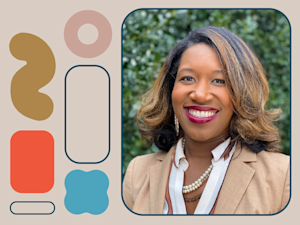
April 10, 2024
Myths and misinformation about ADHD and learning differences show up all the time on social media. Find out what’s fact and what’s fiction, and learn about the impact of these myths on kids of color.
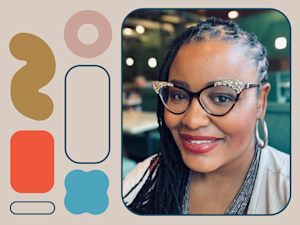
March 27, 2024
ADHD advocate René Brooks was diagnosed with ADHD twice as a child. But it wasn’t until she was diagnosed again as an adult that she finally got support. Listen to her story.
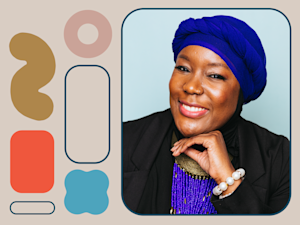
March 13, 2024
Learn about the steps to getting an IEP and starting your child’s special education program. Get tips from an expert.

February 14, 2024
Learn how four members of the Understood team are making an impact in the lives of people with learning and thinking differences.
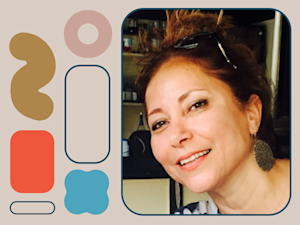
January 31, 2024
How can high-schoolers and their families prepare for life after high school? Get advice and tips from a college advisor.

January 17, 2024
Some kids don’t like to share information about their school day. Get tips on how to get them to open up and share. These tips and conversation starters can help your child to open up.
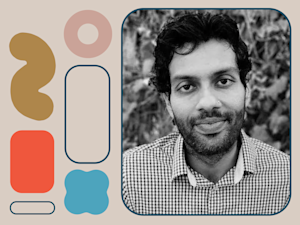
January 3, 2024
The school-to-prison pipeline has disrupted education for kids of color for a long time. Learn what the pipeline is and why it’s critical to end it.

December 6, 2023
Telling your relatives about your child’s challenges can be difficult. Get tips on how to make the talk easier to manage.

November 8, 2023
For some students of color, feeling mistreated by teachers is a common experience — and it shouldn’t be. Learn how to help kids self-advocate.
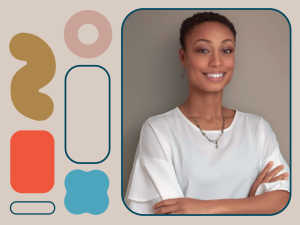
October 25, 2023
Dyslexia is a common learning difference that impacts many kids of color. Hear from an expert and learn ways to support kids in the classroom.
